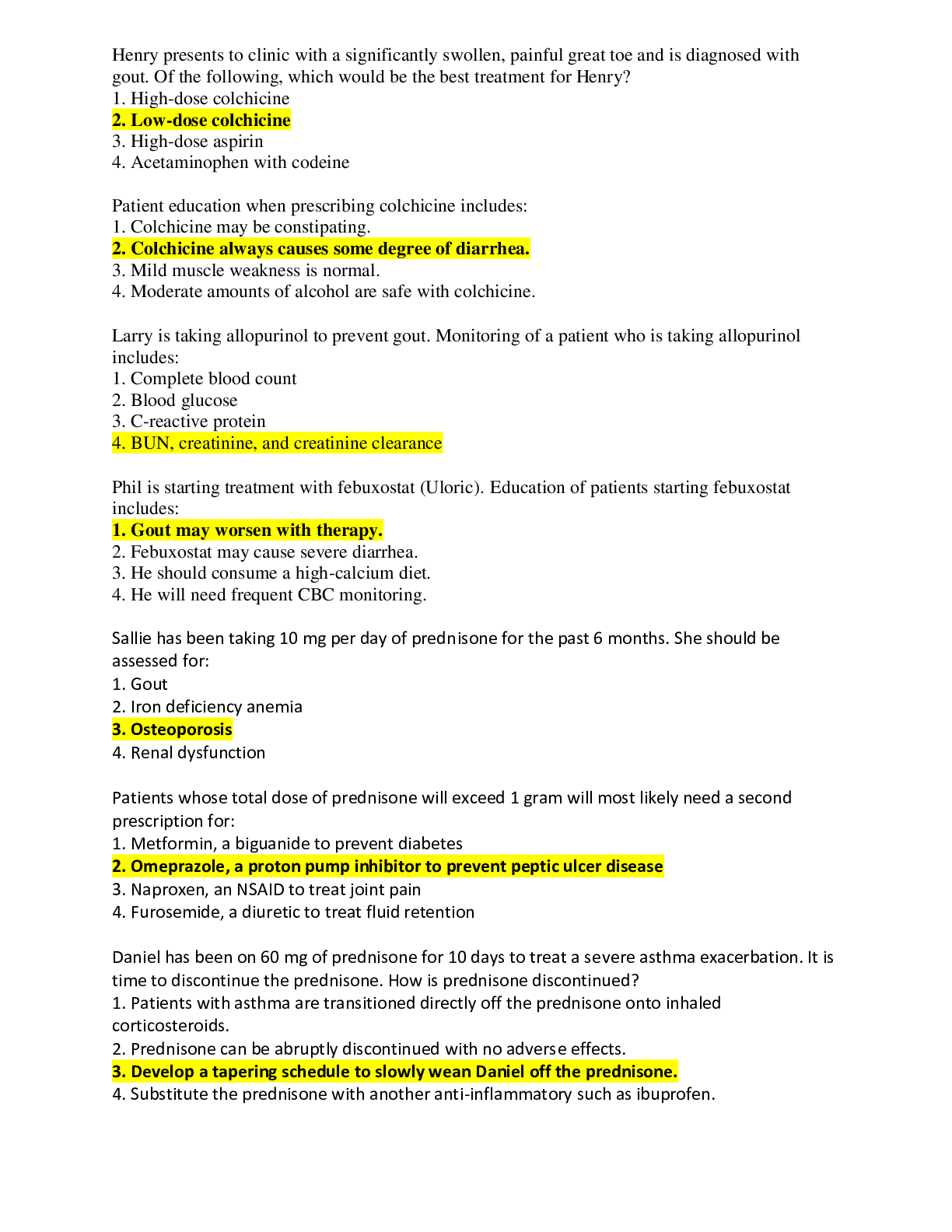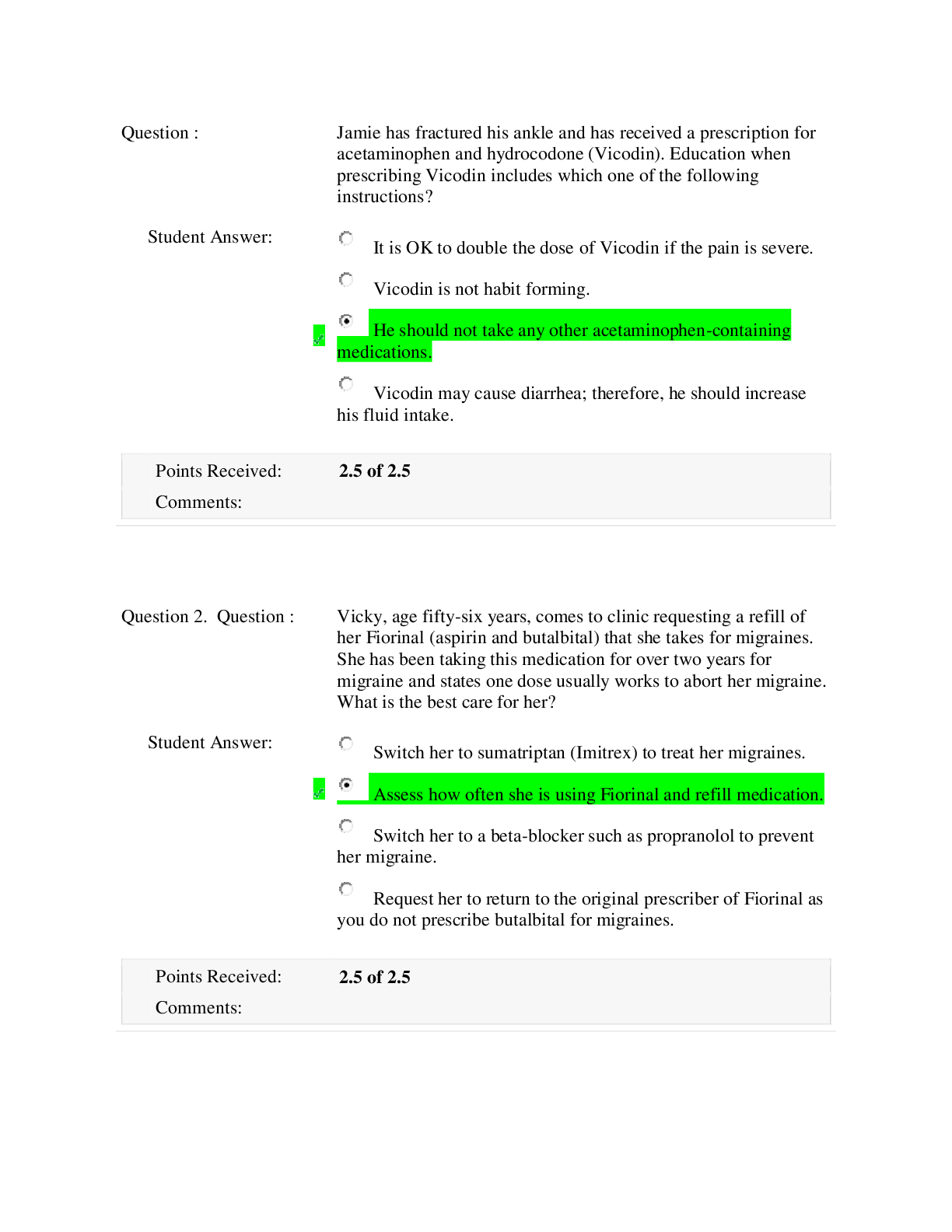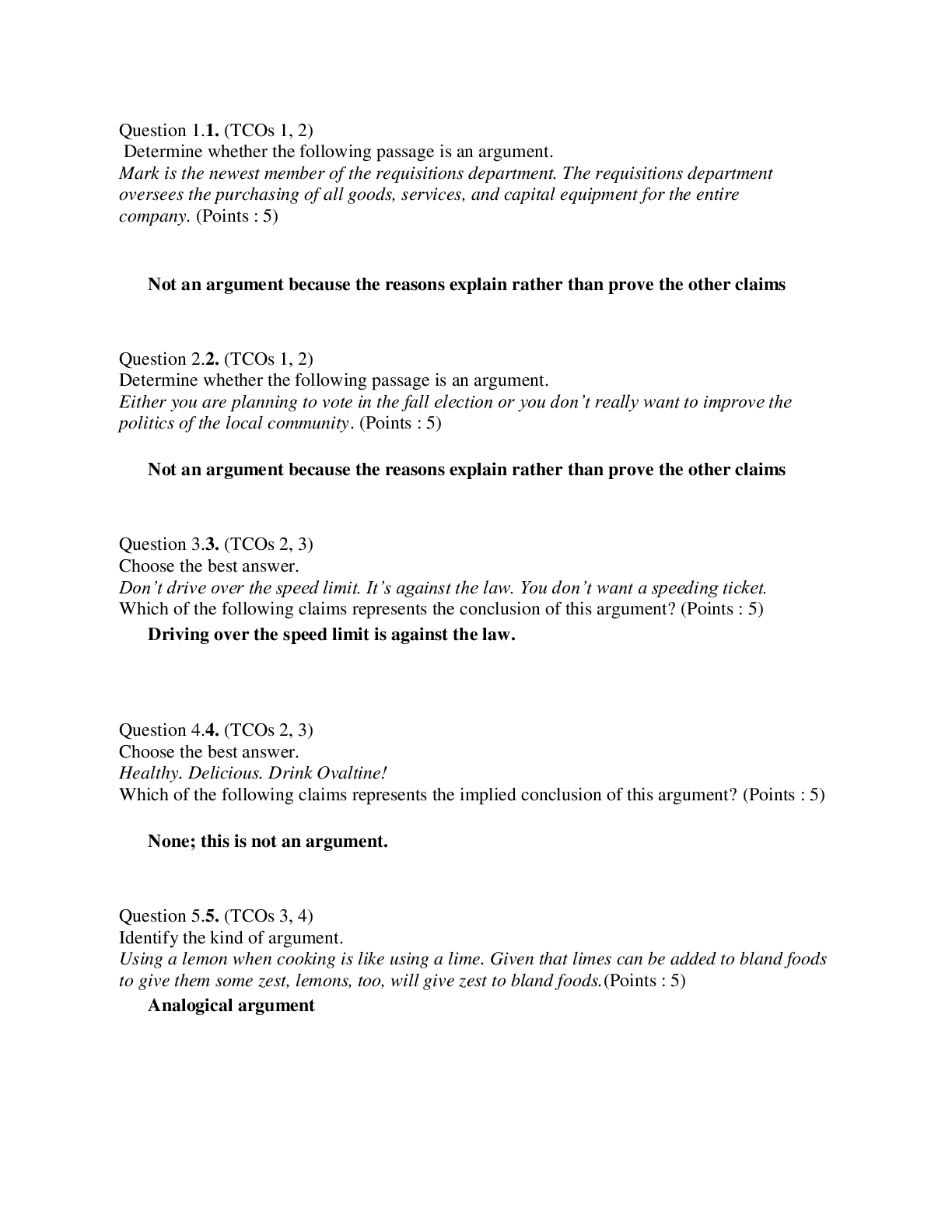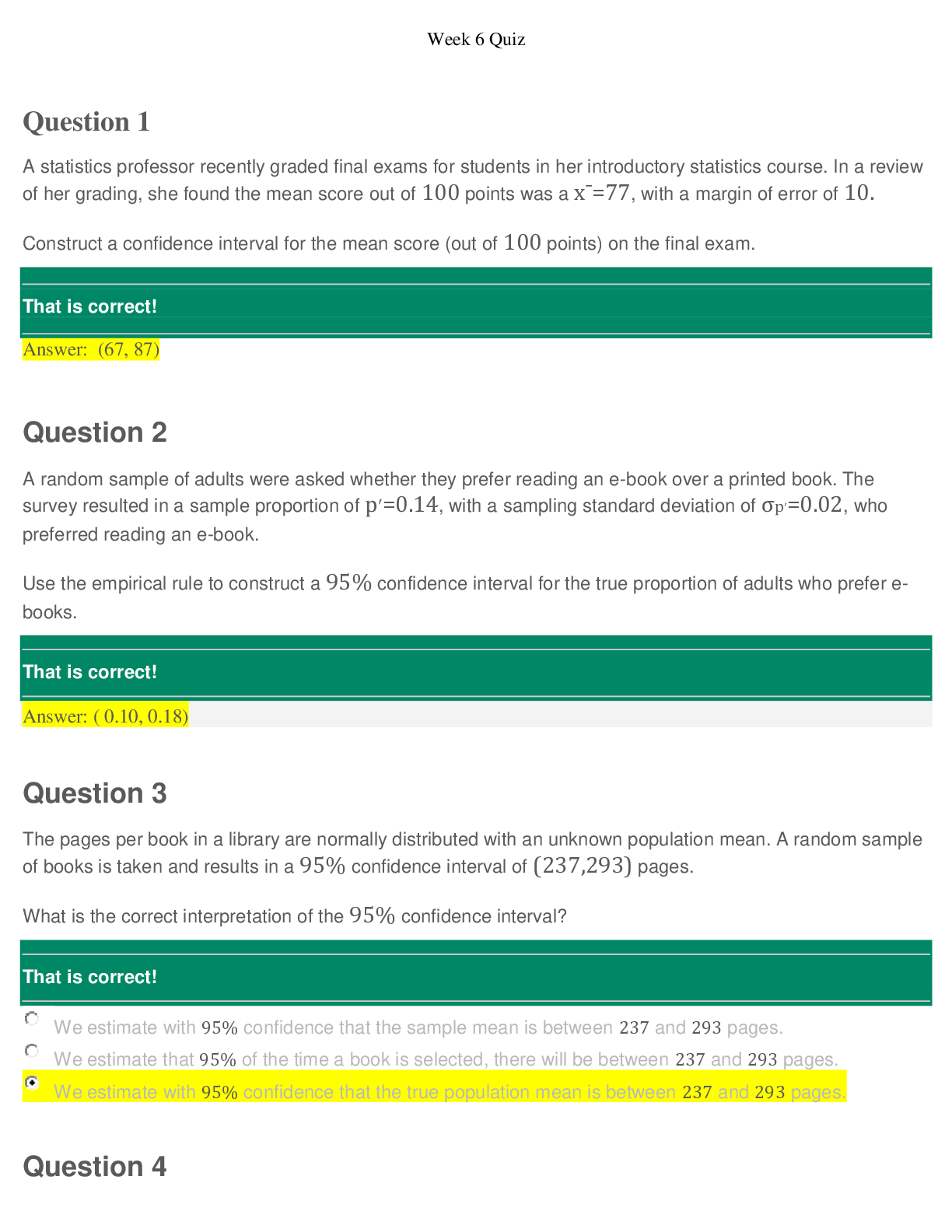NR 511 Week 6 Quiz 2020 – Chamberlain College of Nursing
Document Content and Description Below
NR 511 Week 6 Quiz 2020 – Chamberlain College of Nursing (A grade Week 6 Quiz Question 1 1 / 1 pts A client with hyperthyroidism presents with a complaint of a “gritty” feeling in her eyes. Over... the past week, her visual acuity has diminished, and her ability to see colors has changed. She also has a feeling of pressure behind her eyes. The next step for the nurse practitioner is to: Order a total thyroxine (T4). Correct! Refer the client for immediate evaluation by an ophthalmologist. Order a thyroid ultrasound. Prescribe a beta-adrenergic blocker. The practitioner should refer the client for an immediate evaluation by an ophthalmologist. Clinically recognized Graves ophthalmopathy occurs in about 50% of cases of Graves disease. A client with Graves orbitopathy with these complaints is at risk of blindness if there is compression of the optic nerve. Additional symptoms include photophobia and diplopia. Autoantibodies present in Graves disease can cause increased muscle thickness in the eye, leading to edema and compression of the optic nerve. Fundal exam may reveal disk swelling. This is an emergency situation that may require hospitalization and treatment with prednisone to diminish the inflammation. Artificial tears are also helpful. In 75% of clients, the onset of Graves orbitopathy occurs within a year before or after the diagnosis of thyrotoxicosis but can sometimes precede or follow thyrotoxicosis by several years. Question 2 1 / 1 pts A low thyroid-stimulating hormone (TSH) can lead to: Brittle hair. Correct! Osteoporosis. Weight gain. Bradycardia. Hyperthyroidism presents with a suppressed TSH and elevated free thyroxine (FT4). Manifestations include weight loss, tachycardia, diarrhea, anxiety, and warm, silky skin. The increased metabolic state of hyperthyroidism can cause cardiac dysrhythmias and osteoporosis. The clinical manifestations can also occur when there is excessive thyroid replacement. Question 3 1 / 1 pts Which of the following statements about hypothyroidism is not true? Correct! The rate of hypothyroidism decreases with age. Lithium use is a risk factor for hypothyroidism. The most common cause of autoimmune hypothyroidism is Hashimoto thyroiditis. The most common worldwide cause of hypothyroidism is iodine deficiency. This is not true; hypothyroidism becomes more common as we age. Question 4 1 / 1 pts Alice, age 48, has a benign thyroid nodule. The most common treatment involves: Radioactive iodine therapy. Correct! Watchful waiting with annual follow-up. Administration of levothyroxine therapy. Surgery. Thyroid specialists agree that most benign thyroid nodules require no management beyond watchful waiting and annual follow-up to evaluate their size. Question 5 1 / 1 pts An elderly client presents with atrial fibrillation. Which of the following lab tests is important in forming the diagnosis? Complete blood count (CBC). Correct! Thyroid-stimulating hormone (TSH). C-reactive protein (CRP). [Show More]
Last updated: 2 years ago
Preview 1 out of 10 pages

Buy this document to get the full access instantly
Instant Download Access after purchase
Buy NowInstant download
We Accept:

Reviews( 0 )
$15.00
Can't find what you want? Try our AI powered Search
Document information
Connected school, study & course
About the document
Uploaded On
Oct 14, 2020
Number of pages
10
Written in
Additional information
This document has been written for:
Uploaded
Oct 14, 2020
Downloads
0
Views
85



.png)

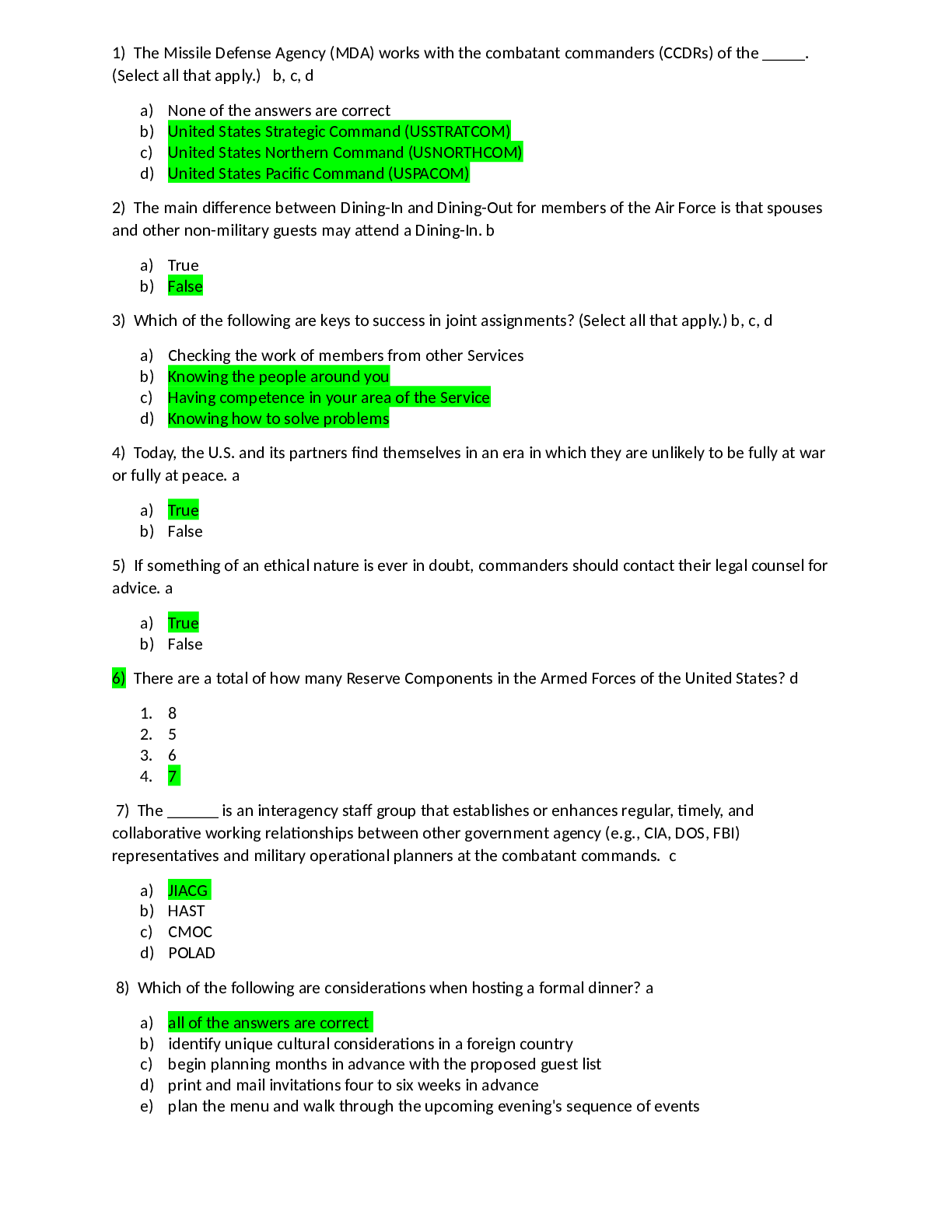
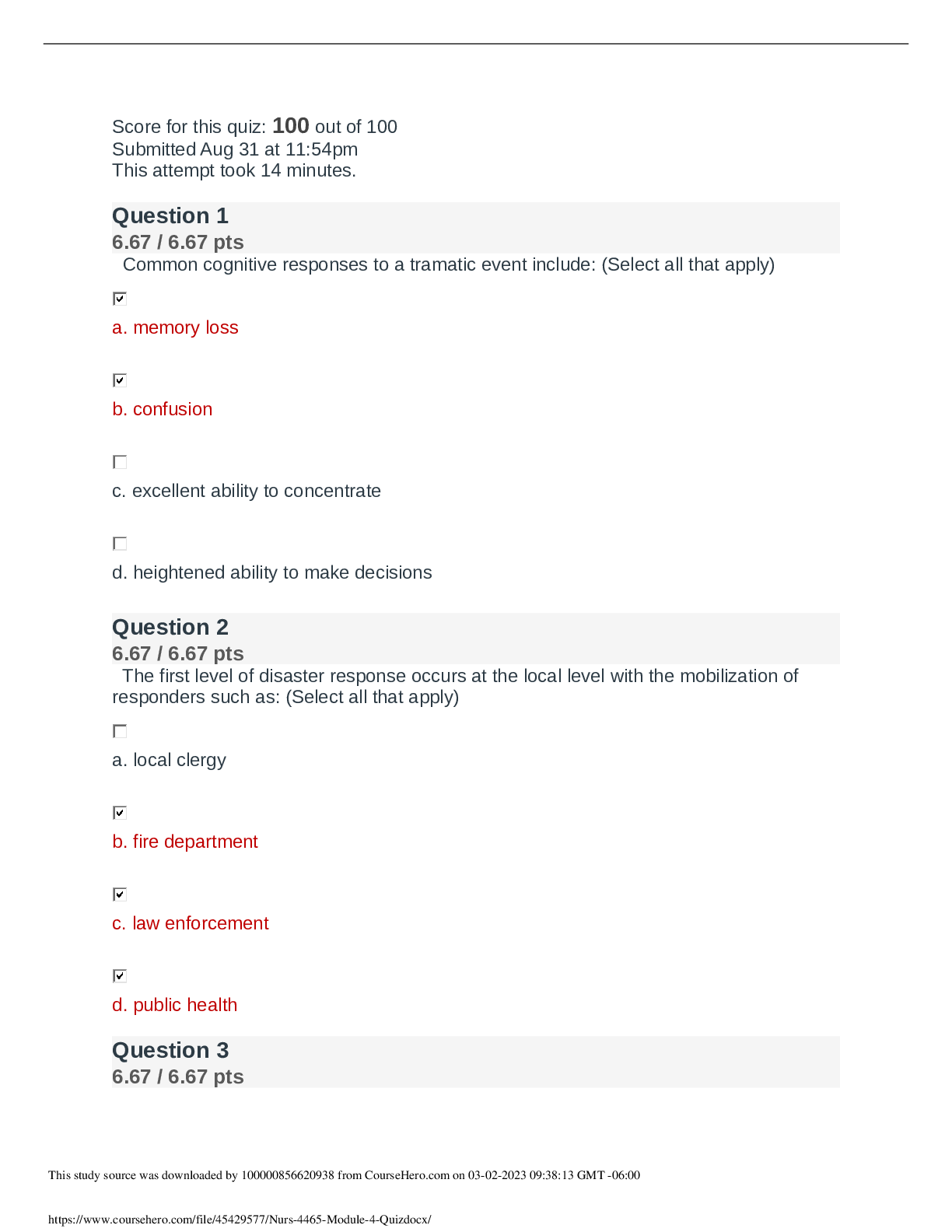
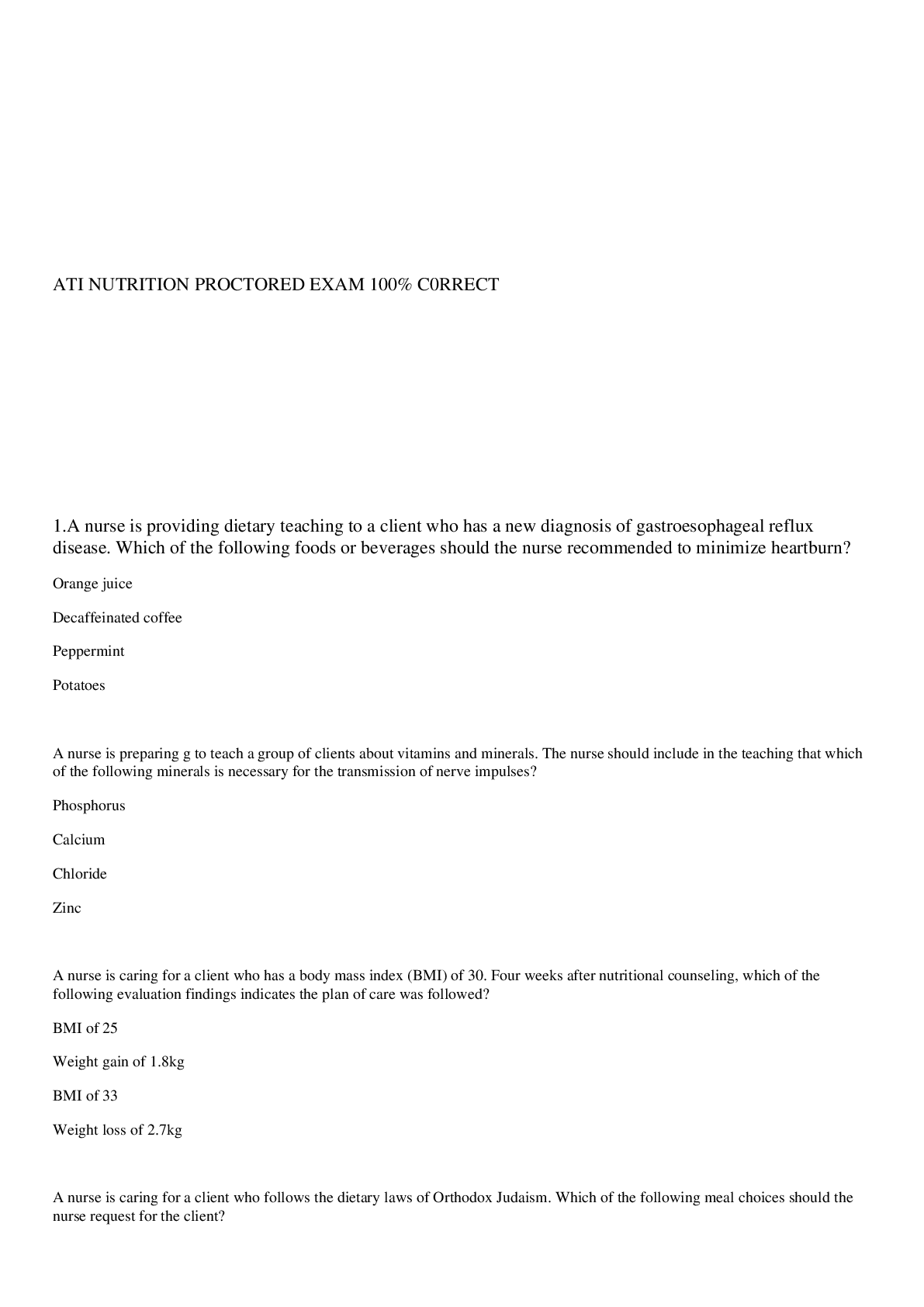
.png)
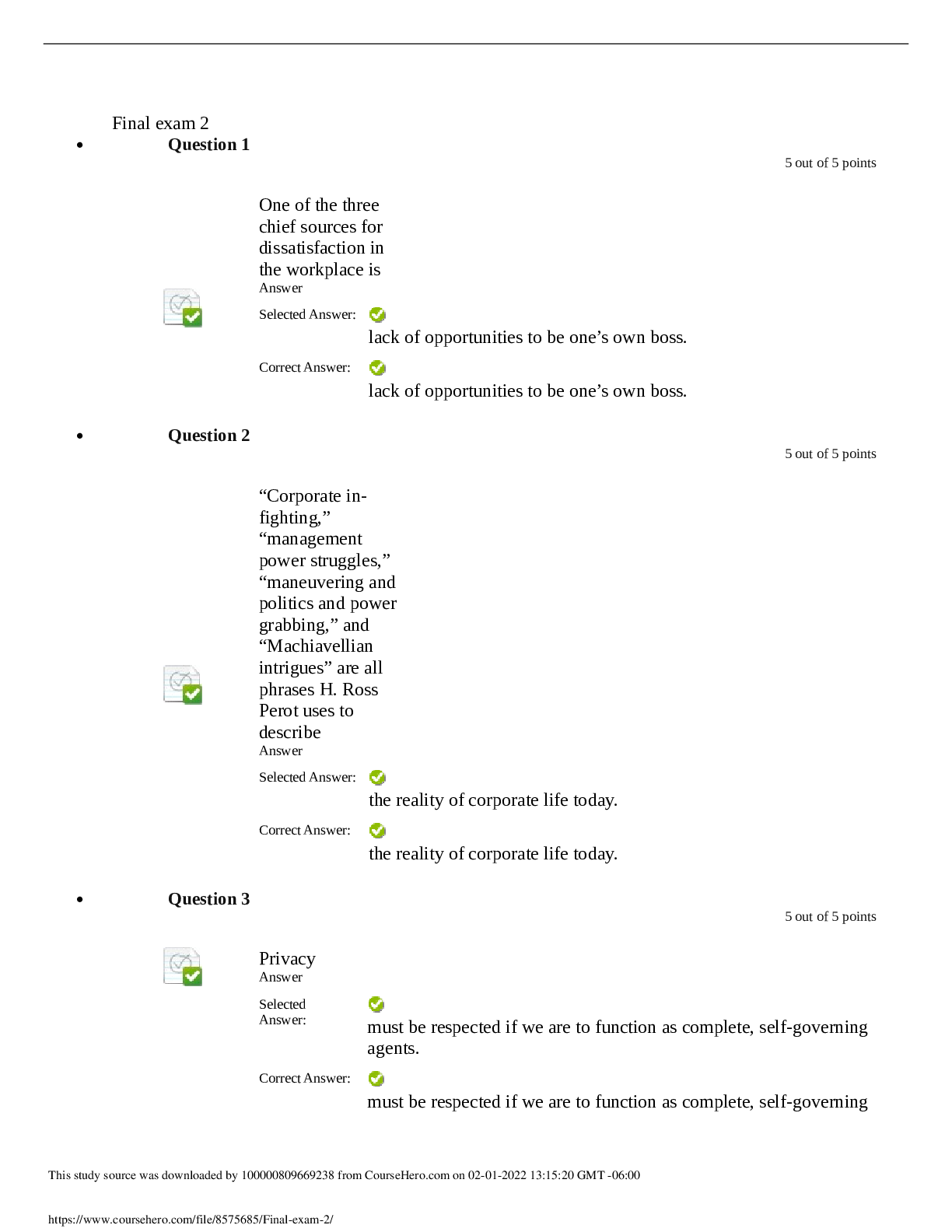
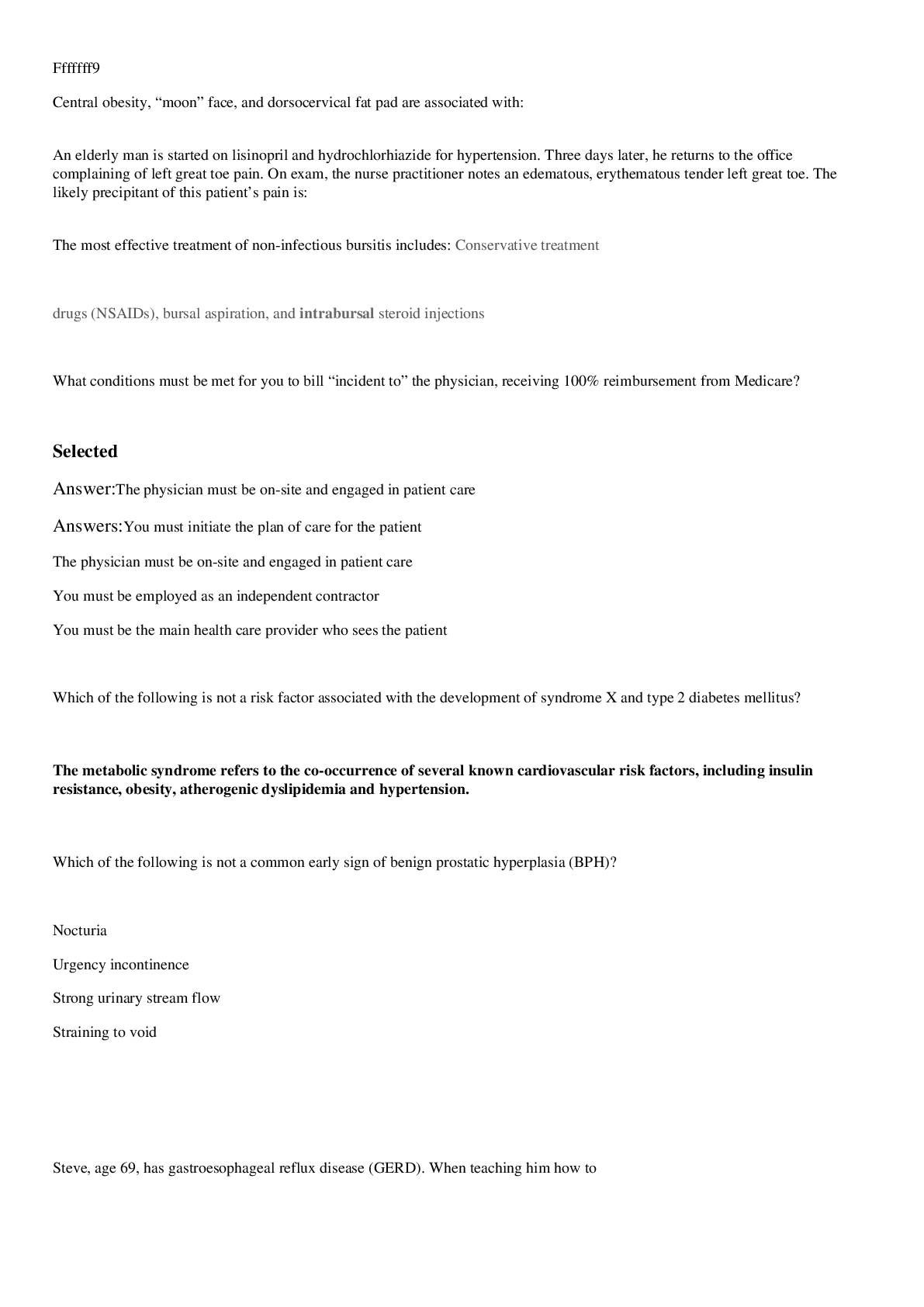
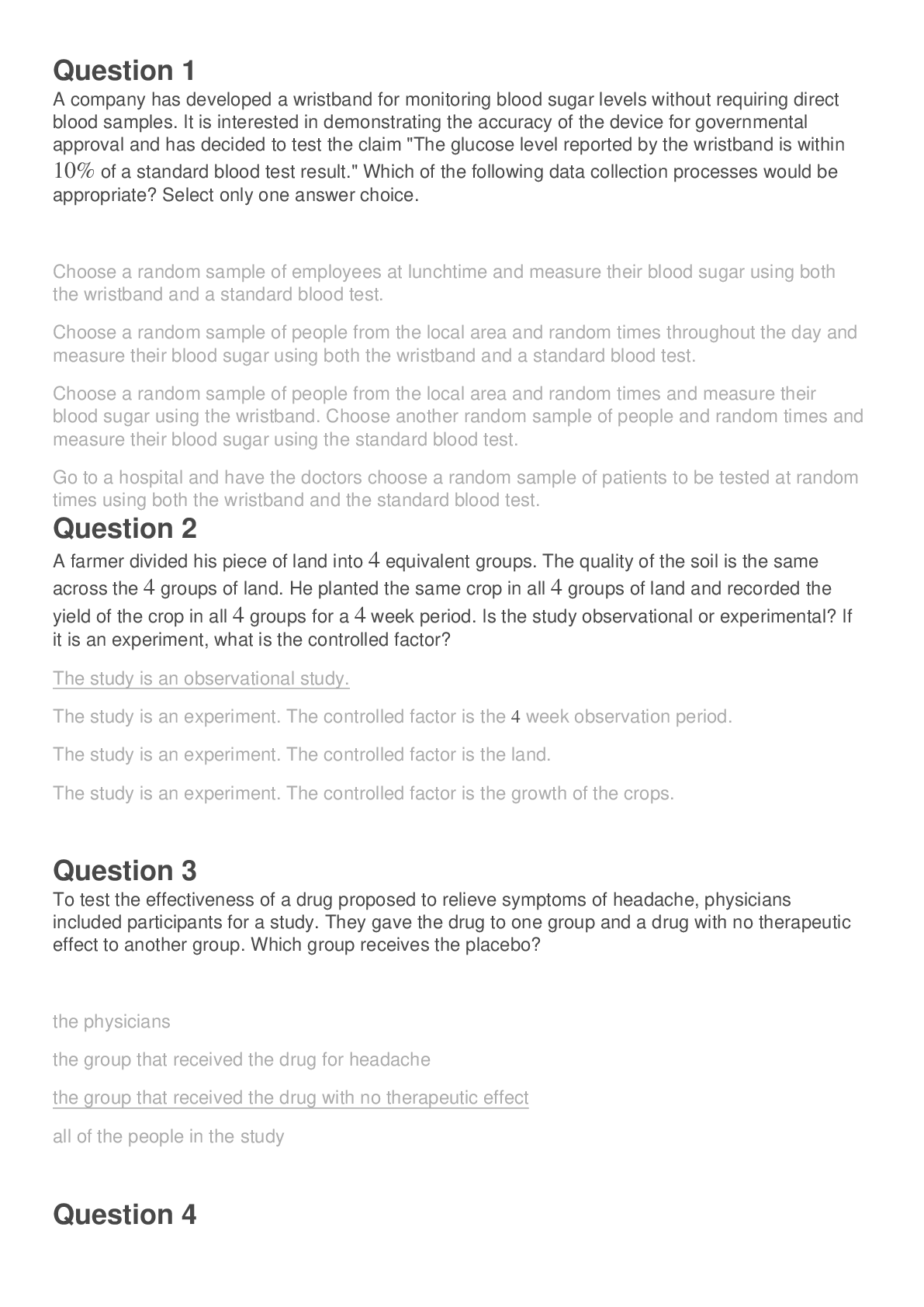
.png)


